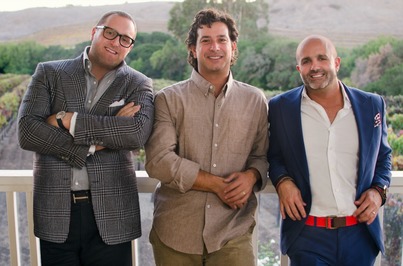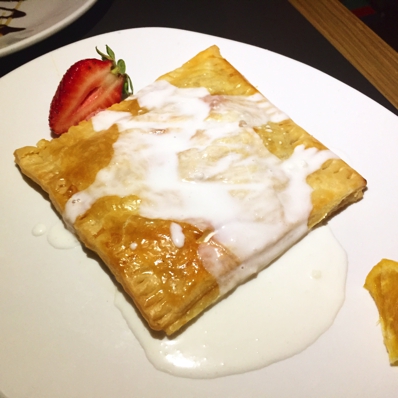 Law and ethics have an interesting relationship in the business world, and certainly in the restaurant industry. I’m talking specifically about price consistency [prices as they appear online vs. in the restaurant itself], where the opportunity to bend the rules remains ever-present. While many restaurant owners are pushing the boundaries to come across as more affordable on the front end, they will feel the consequences of lost volume and loyalty if the gap between perceived price and actual price grows too big. I became an alienated customer last week, when my bill totaled 50% more than I planned to spend. This restaurant’s ‘average price’ was listed around $30 in several online resources. $30 covered my entrée [nowhere near this restaurant’s most expensive item] and a side dish. No drinks, no dessert, and one appetizer split four ways. After tax and tip I spent $45 to leave just above the threshold of still hungry. The money wasn't the issue. The food happened to be very good, and aside from small portion sizes, worth the cost. The problem was that everyone in my group felt cheated, like the restaurant lured us in with a $30 estimated price, then used a bait-and-switch to make us pay $45 at the table. We will not be dining there again for a long time. Keep your perceived menu prices honest. Try the following tactics... Keep Your Online Menu Up-to-Date The vast majority of potential customers look up a restaurant’s menu online before deciding to dine. Cases certainly exist where restaurants leave an outdated menu that lists phased-out items, or worse, old prices. Inflation and rising food costs inevitably lead to price hikes, but be sure to give your customers realistic expectations of what they need to pay. The difference of a dollar, or even a few cents, can be a deal-breaker for some customers, and ultimately will mean the difference between them becoming repeat customers. Not to mention what they will say to their friends if they felt like they were cheated out of a few bucks… "If your target customer doesn't typically look at the price when ordering, they’re not going to look much at the estimated price online either." Some restaurants choose not to include prices on their online menus. This topic could become its own article [and likely will in the future], but as a general rule the only restaurants that should do this are those that appeal exclusively to a highly affluent clientele. If your target customer doesn't typically look at the price when ordering, they’re not going to look much at the estimated price online either. For those restaurants catering to the other 99.9%, I would recommend posting your prices because your customers will find an estimated cost one way or another.
Monitor Your Prices on Online Review Sites Restaurant research is dominated by the Zagats and Opentables of the world. While many customers will find your menu online, they will almost certainly use tools like these to look you up [or find you in the first place]. These resources each have their own methods for calculating average check: entree, appetizer and split dessert vs. entree and both split appetizer and dessert; 1 drink included vs. no drinks included, etc. virtually none of them factor in tax and tip. The key is to keep your prices as consistent as possible across these platforms. Understand the Customer Experience It is also essential to be realistic in projecting what your typical customer would order. If you serve smaller portions and notice customers averaging 3-4 dishes each, it is imperative to reflect these findings in your estimated average check. Nobody likes to leave a restaurant hungry, and customers that feel like they need to cut back on the amount of food they order just to stay within budget will be hesitant to return. Additionally, your projections should properly reflect which ‘cost tier’ customers order from most often. Very few people will order the cheapest appetizer, entree and dessert on the menu, and customers will quickly pick up a restaurant's attempts to hide higher prices behind singular low-cost items. Consider a tracking system that lines up items in each menu category from least to greatest and records the amount of each item ordered. The resulting visual is a bar chart that shows you the where the majority of your customers will fall in terms of price point. In hindsight, the principles are quite simple. Be real about your restaurant's prices. This may cost you in the short-term, but you will reap tremendous rewards over time by growing repeat customer revenue and word-of-mouth marketing.
23 Comments
 Tom’s Urban goes hand-in-hand with LA Live’s flux of excitement. An enormous 2-story dining room with 75+ TV’s is geared to both accommodate and entertain the waves that come before and after the plethora of sporting events, concerts and other huge draws that highlight DTLA’s entertainment scene. An equally massive menu, as complex as the schedules of the Staples Center, Microsoft Theater at Convention Center combined, caters to virtually every palate out there. And while it may not be a destination restaurant on its own, Tom’s Urban is ‘Just LA enough’ to stand out. Comfort food provides the base for Tom’s Urban’s labyrinth selection, which puts sports bar fare in a new light with everything from burgers and ribs to pizzas and street tacos. The buffalo chicken sliders are a definite favorite, melding together boneless buffalo strips, blue cheese and brioche rolls into something rich and delicious. The sticky belly street tacos are right up there as well, with rich, flavorful pork belly [plenty of meat in addition to the fat!] complemented with a good chipotle aioli.  Seafood may not be the best decision here; not for quality, but execution. Shrimp and lobster mac ‘n’ cheese came out as if it were under the heat lamp for way too long and the Bangkok pan-glazed salmon was a bit overcooked, though the glaze was excellent. The truffled cracked lobster sliders came out with hearty portions of seafood, but didn’t bode well with brioche and couldn’t justify the high price tag for just two sliders. The cocktail list is just as diverse and drinks come out in portions as fair as the food. And if you have time for dessert, the chocolate bomb, salted caramel cheesecake and house-made urban pop tarts can be worth a try. Just try not to let all the people watching distract you from whatever may be on the table. Tom’s Urban is located at 1011 S. Figueroa St., Los Angeles, California 90015. Average out-the-door price for split appetizer, entrée, split dessert and 1-2 drinks is ~$79/person. For more information call Tom’s Urban at (213) 746-8667 or visit them online.  King of Clubs is gaining traction as the ‘King of Cabs’ from the Napa Valley. And at the heart of this luxurious creation are three very interesting gentlemen. Three fascinating personalities, three diverse backgrounds, three beaming success stories, and one shared [tremendous] passion and deep knowledge for wine. “This is what we truly believe to be the best of the best, ” said Christopher King, whose palate for fine wine could bring a smile to Bacchus’s face*. King, a self-made millionaire, joins acclaimed restaurateur Justin Anthony and iconic winemaker Robert Mondavi Jr. as the kings of King of Clubs. Don’t let these prestigious titles fool you, though. This wine has proven itself beyond its celebrity owners’ personal brands, coupling with King’s saying that “This isn’t just a fancy label with expensive packaging.” King of Clubs, a blend of Cabernet Sauvignons with a hit of Petite Sirah, recently beat out two 100-point wines to win a blind taste test from some of the world’s top collectors. Its 2010 vintage, the first one available, only spans 333 bottles and can only be found in a small selection of LA’s top restaurants and wine bars. The wine retails for $800 a bottle, thought this certainly hasn’t stopped a long waiting list for private collectors from forming. So the natural next step, of course, is to come to Las Vegas. The wine is set to arrive by shortly after the new year. “We’re humbled and honored to be part of the Southern Wine and Spirits family,” said King. The trio will be working with Southern to target ideal restaurants for King of Clubs to launch. And of course in a city like this, there’s no shortage of fine dining options where King of Clubs will find itself right at home. The future for King of Clubs looks bright indeed, but it should be known that the Southern partnership didn't just span out of thin air. King, Anthony and Mondavi essentially reverse-engineered this wine to be made for Sin City, taking everything that an aficionado is looking for in high-end Cabs from across the globe and combining it into one bottle. “[The idea] came from all of us. Rob, a 4th-generation winemaker, understands the intricate details of what to look for. Justin has an incredible palate; he tastes every wine. Me, I’m infatuated with wine,” King said to introduce the multi-layer process that came with developing King of Clubs. “When you take the three of us together, that’s the way to make the perfect blend.” The team formed, appropriately so, over their mutual love for high-end wine. “I developed my passion by creating wine lists, menus,’ said Anthony, who owns famed Atlanta restaurants 10 Degrees South and YEBO. Originally from South Africa, he has since spent more than 20 years in the restaurant industry and his exposure to Napa wines broadened his curiosity and allowed him to “grow a love for the region.” King, an entrepreneur who built a successful real estate empire and, more recently, a thriving healthcare business, simply made wine a part of his life. “I really enjoyed how every bottle, every vintage, every brand was different,” he said. “Then I started getting into high-end collecting and taking it over the top…it was a downward spiral from there [laughs]. I was able to gain a palate that most people don’t get to experience in life. It was a cliché red obsession. ” But it was this ‘obsession’ that brought King to Anthony and Mondavi, and the three of them started working together to conceptualize one of Napa’s next great creations. “We’re [wine tasting] in Napa and I notice that Chris’s ordering different,” Anthony said. “We talked about what seemed off in the Cabs we were getting and knew we could do something with this. Fast forward to a year later, we’re with Robert, who’s been a good friend of mine doing business with the restaurants.” After some brainstorming over Napa growth opportunities, the three of them found their muse in classic Bordeaux, with execution in Cabernet. “When you drink an older Bordeaux, it had a great nose on it but wasn’t so in-your-face,” King said. He was a big proponent for making King of Clubs a smoother wine with a calm finish to distinguish it from other Cabs. “I like the older Bordeauxs not being very hot, not getting that alcohol burn sensation that I’m not really a fan of. A lot of the Napa Cabs have that.” The team got to work from there, in a fashion that many would classify as an absolute dream job. They were set on marketing to the luxury segment, crafting a product that would appeal to those already accustomed to near perfection in the wine world. They sought that perfection, sparing no effort in the process. “We probably had $20,000 worth of wine sitting on Justin’s kitchen table to see what we liked,” King said. “We made countless and endless trips to Napa, tasting and tasting, getting down to the decimal points of mixes.” They settled on a mix of 86% Cabernet Sauvignon from the upper eastern bench of Oakville, 10% Cabernet Sauvignon from the Napa Valley floor and 4% Petite Sirah. The next step was getting the finished product into the restaurants that best fit the King of Clubs brand, which proved relatively easy. “The key component for Justin and I is our relationships. From Hong Kong to the UK and here in the States, we run off relationships and that’s how we get into these restaurants,” said King about entering the LA market. “But we actually made it by having a great product. The sommeliers tasted it and loved it.” Anthony’s relationship with Wolfgang Puck landed King of Clubs in Spago Los Angeles. They expanded their repertoire to include Cecconi’s and the Montage Hotel, also in Beverly Hills. Spago, however, became the focal point for King of Clubs to make its debut as a major player in the high-end spectrum. The team partnered with Heritage auctions, which brought some of its top clients into Spago before an auction where the wine was featured. Many of these individuals were wine collectors, providing the perfect marketing opportunity. “We did a blind taste test with 2010 Screaming Eagle and 2010 Dominus,” King began. Screaming Eagle retails for $2400, and both are 100-point wines. King of Clubs, however, won in grand style. “King of Clubs was favored unanimously and by miles,” King said warmly, quoting the Heritage executive who administered the taste test. This brings our story back to Las Vegas, where King, Anthony and Mondavi will lean on Southern to continue the brand’s expansion, both on and off the Strip. In the same way that they matched the King of Clubs to esteemed restaurants and bars in LA, the team will be seeking out Las Vegas establishments that provide the same high-end experiences to attract the ideal customer. “We’re not going after any one particular restaurant, there are so many high-end places,” Anthony said. “We hosted a tasting and Marche Bacchus’s [owner] Jeff Wyatt loved it. He has one of the best wine lists in the city so that’s great.” And while King of Clubs is increasing its outreach, its supply will remain limited to both preserve quality and retain exclusivity. “We only produced 333 bottles in the first vintage and we did that for a reason,” King said. The group even chose to skip over its 2011 vintage because they didn’t see the grapes up to their high standards. “We upped case count to 250 cases [3000 bottles] in 2012, so that’s where we’re going to sit at. We could up it further, but that’s not our goal. We want to keep it exclusive.” “It’s about quality over quantity,” Anthony added. “For us it’s about delivering the best of the best.” And while only a small number of establishments will get their hands on King of Clubs, the team has some exciting expansion plans in store. Be on the lookout for new product lines in the near future. “We’re getting ready to do Champagnes and so forth,” King said, breaking this news for the first time. King, Anthony and Mondavi have each devoted a piece of themselves into the production of this rising label, which in turn reflects the expertise, the fine-tuned palate and just the right amount of panache in a new kind of luxury wine. The team has built a strong base behind its product, and now Southern will join in to build the wine’s history in a new town. Three fascinating gentlemen. One brand. Full of surprises. *From Ancient Roman times, Bacchus is the God of wine. |
AuthorBenjamin Brown is a seasoned restaurant writer and hospitality consultant, serving up SoCal's hottest food news and reviews. Categories
All
Archives
June 2021
@Foodie_Biz |
|
Home
About
Blog
Consulting Tips
Contact
Legal
|
Foodie Biz provides restaurant news and reviews for the food community, as well as consulting advice for restaurant owners and other hospitality professionals.
Contact Foodie Biz for media opportunities and freelance consulting projects. Contact Foodie Biz |









